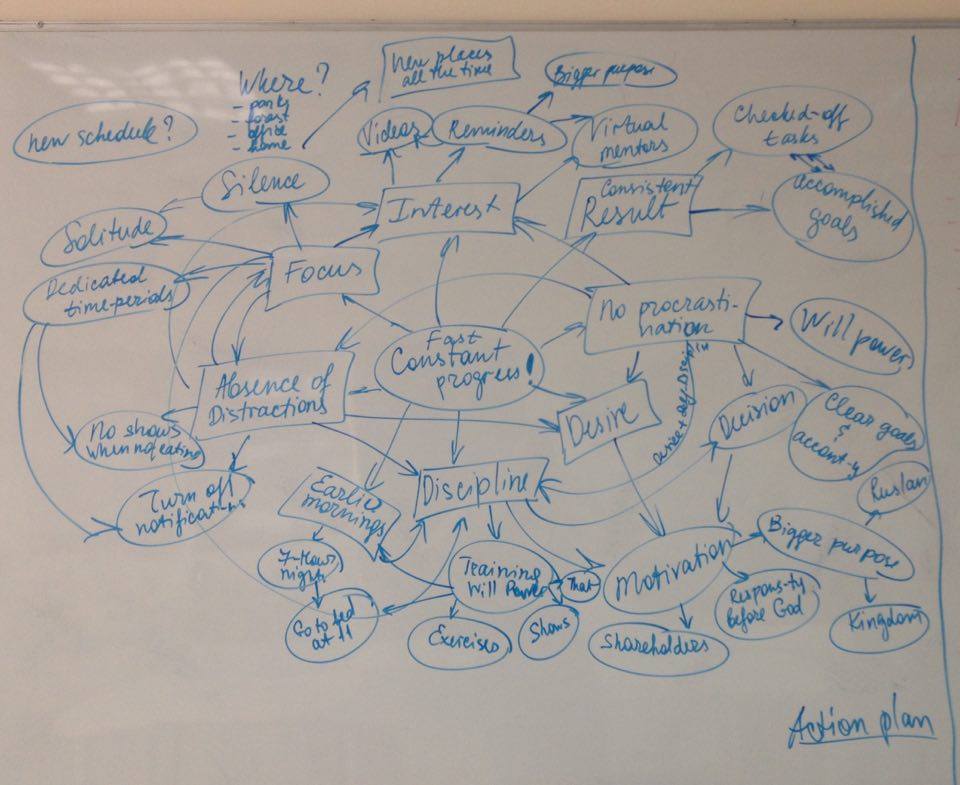 A great man once said: “If you want something you’ve never had, you must be willing to do something you’ve never done.” Yesterday I reached the point when something new had to be done for the situation to change.
A great man once said: “If you want something you’ve never had, you must be willing to do something you’ve never done.” Yesterday I reached the point when something new had to be done for the situation to change.
As it happened, it was Saturday and nobody else was in the office. We have a huge whiteboard on the wall which is perfect for brainstorming. We usually use it for seminars, planning sessions and meetings. ‘Why don’t I take advantage of it now, and try to brainstorm with myself?’, I thought. Nobody was disturbing me, I had the whole office for myself and enough time for such an activity.
My mind has been in stress lately, trying to figure out everything I have to accomplish, all the deadlines and all the challenges. First of all, I needed to clear my mind and organize my thoughts. The best way to do that is mind-mapping.
If you’re not familiar with the technique, check it out here: https://litemind.com/what-is-mind-mapping/
I wrote the main challenge in the middle and started connecting it with potential solutions and ideas how to reach my goal. At first those words and phrases didn’t seem particularly new or special, but soon they started to shape into a good plan.
Here’s what I came up with after about half an hour of brainstorming.

My Tips for Mind-mapping
If you’d like to try this very effective technique, here are a few tips:
- Find a place and time when nobody can disturb you.
- If you can use any kind of board, it would be great. You can use a white, green or black board, a flip chart or a pin board.
- After writing a few goals take a short break, walk away from the board to let your mind get distracted. It will help your brain move from focused into diffused mode and come up with new ideas.
- While thinking and writing, stand close to the board, and then walk away to look at it from the distance. It will help you see new angles and new perspectives of your challenge.
- Take notice of those items that get the most connections. They are the ones that deserve your most attentions. In my case those were ‘discipline’ and ‘absence of distractions’.
- After you finish, write an action plan based on all your goals and connections.
Based on my new discoveries, I wrote a new schedule for myself and have already started putting it into life. I hope this example and these tips will be helpful for you and will inspire you to take action too. Want changes in your life? Start doing something you’ve never done before.
For more information on creativity development check out my FREE 7-Step Guide to Finding Ideas and Solutions
So, let me know in the comments how you like to brainstorm and organize your thoughts.
Stay positive and enjoy your life!


